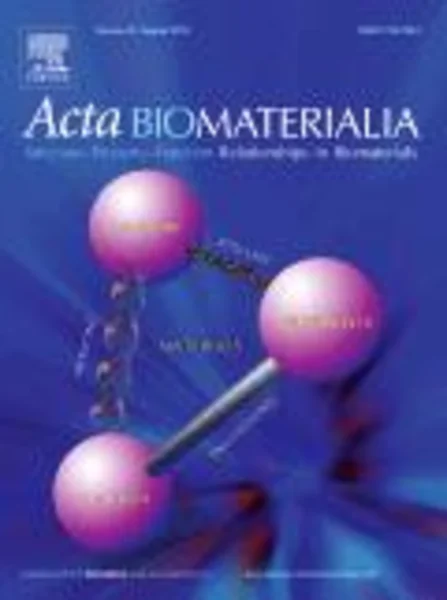-
synthesis of biomimetic segmented polyurethanes as antifouling biomaterials
جزئیات بیشتر مقاله- تاریخ ارائه: 1392/01/01
- تاریخ انتشار در تی پی بین: 1392/01/01
- تعداد بازدید: 629
- تعداد پرسش و پاسخ ها: 0
- شماره تماس دبیرخانه رویداد: -
controlling the non-specific adsorption of proteins, cells and bacteria onto biomaterial surfaces is of crucial importance for the development of medical devices with specific levels of performance. among the strategies pursued to control the interactions between material surfaces and biological tissues, the immobilization of non-fouling polymers on biomaterial surfaces as well as the synthesis of the so-called biomimetic polymers are considered promising approaches to elicit specific cellular responses. in this study, in order to obtain materials able to prevent infectious and thrombotic complications related to the use of blood-contacting medical devices, heparin-mimetic segmented polyurethanes were synthesized and fully characterized. specifically, sulfate or sulfamate groups, known to be responsible for the biological activity of heparin, were introduced into the side chain of a carboxylated polyurethane. due to the introduction of these groups, the obtained polymers possessed a higher hard/soft phase segregation (lower glass transition temperatures) and a greater hydrophilicity than the pristine polymer. in addition, the synthesized polymers were able to significantly delay the activated partial thromboplastin time, this increased hemocompatibility being related both to polymer hydrophilicity and to the presence of the –so3h groups. this last feature was also responsible for the ability of these biomimetic polymers to prevent the adhesion of a strain of staphylococcus epidermidis.
مقالات جدیدترین رویدادها
-
استفاده از تحلیل اهمیت-عملکرد در ارائه الگوی مدیریت خلاقیت سازمانی و ارائه راهکار جهت بهبود
-
بررسی تاثیر ارزش وجوه نقد مازاد بر ساختار سرمایه شرکت های پذیرفته شده در بورس اوراق بهادار تهران
-
بررسی تأثیر سطح افشای ریسک بر قرارداد بدهی شرکت های پذیرفته شده در بورس اوراق بهادار تهران
-
بررسی تأثیر رتبه بندی اعتباری مبتنی بر مدل امتیاز بازار نوظهور بر نقد شوندگی سهام با تأکید بر خصوصی سازی شرکت ها
-
تأثیر آمیخته بازاریابی پوشاک ایرانی بر تصویر ذهنی مشتری پوشاک ایرانی (هاکوپیان)
-
شناسایی مولفه های هویت بومی برنامه درسی دوره پیش دبستانی
-
تحلیل عددی غیر خطی سد بتن وزنی با توجه به اندرکنش سد-مخزن
-
تعیین بار گسیختگی در سازه موج شکن با استفاده از روش آنالیز حدی کران بالا
-
مطالعه نوعی از تجهیزات اتلاف انرژی برای کاربرد در قاب های فولادی متشکل از مهاربندی نوع شورن
-
bfgf-containing electrospun gelatin scaffolds with controlled nano-architectural features for directed angiogenesis
مقالات جدیدترین ژورنال ها
-
مدیریت و بررسی افسردگی دانش آموزان دختر مقطع متوسطه دوم در دروان کرونا در شهرستان دزفول
-
مدیریت و بررسی خرد سیاسی در اندیشه ی فردوسی در ادب ایران
-
واکاوی و مدیریت توصیفی قلمدان(جاکلیدی)ضریح در موزه آستان قدس رضوی
-
بررسی تاثیر خلاقیت، دانش و انگیزه کارکنان بر پیشنهادات نوآورانه کارکنان ( مورد مطالعه: هتل های 3 و 4 ستاره استان کرمان)
-
بررسی تاثیر کیفیت سیستم های اطلاعاتی بر تصمیم گیری موفق در شرکتهای تولیدی استان اصفهان (مورد مطالعه: مدیران شرکتهای تولیدی استان اصفهان)
-
بررسی تشخیص و صحت بلادرنگ فیشینگ وب سایت درگاه های پرداخت های اینترنتی
-
بررسی و مقایسه نتایج طراحی اسکله شمع و عرشه به روش نیروئی و عملکردی
-
نقش پراکندگی بین شرکتی قابلیت های بازاریابی بین المللی در استراتژی بازاریابی و پیامده های کسب و کار
-
تاثیر گذاری هوش تجاری بر سرعت بین المللی شدن با نقش میانجی چابکی تنظیم عملیاتی و چابکی سرمایه بازار و تعدیل گری فاصله فرهنگی (مورد مطالعه: شرکت پارس خودرو)
-
عوامل اجتماعی رفتارهای وندالیستی نوجوانان؛ مورد مطالعه: دانش آموزان دوره متوسطه شهر گرگان




سوال خود را در مورد این مقاله مطرح نمایید :